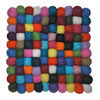SCANDINAVIAN 60: Heroic Legends of the North
MWF 1-2 Spring 2019, Dwinelle 182. Instructor: Kate Heslop
Units: 4
L&S Breadth: Arts & Literature
Scandinavian 60 is a requirement for the five major concentrations in Scandinavian.
A hamstrung goldsmith. A cross-dressing god. A teenage dragonslayer. A warrior who fights in the form of a bear. A deceived queen who takes a terrible revenge on her closest family. The most beautiful and intelligent woman in Iceland, who buries three husbands. These are just a few of the remarkable characters whose stories have survived almost a thousand years from when they were first composed by anonymous Scandinavian poets and authors. What gave these narratives their contemporary relevance, and why have they survived so long?
The time these stories come from (c. 800-1300 CE) was a period of radical change in Scandinavia, from the pagan warrior societies of the Viking Age, to the Christian, literate, centralized world of the Middle Ages. In this course, you will learn about the literature and other media of Viking Age and medieval Scandinavia, and explore what these stories of gods, kings, warriors, shield-maidens and tragic lovers meant to their medieval audiences. You will acquire tools for reading and interpreting texts and artifacts from distant times and places, and explore some of the recent resonances of these narratives in various media (e.g. music, film, TV, graphic novels, games).
Texts
The Poetic Edda, trans. by Carolyne Larrington, revised edition (OUP: 2014). ISBN 978-0199675340.
The Saga of the Volsungs, trans. by Jesse Byock (Penguin: 2000). ISBN 978-0140447385.
The Saga of King Hrolf kraki, trans. by Jesse Byock (Penguin: 1998). ISBN 978-0140435931.
The Saga of the People of Laxardal and Bolli Bollason’s Tale, trans. by Keneva Kunz (Penguin: 2008). ISBN 978-0140447750.
Further texts will be provided on bcourses.
Prerequisites: None.
